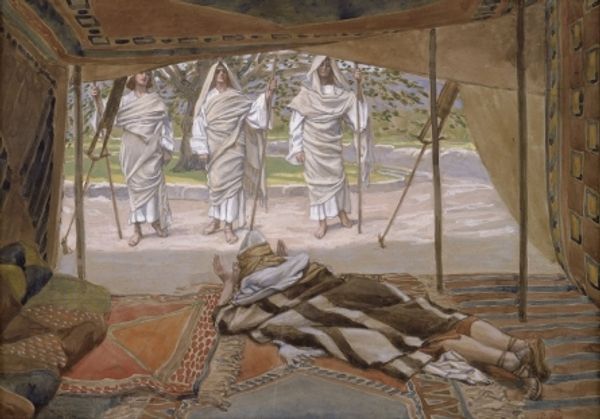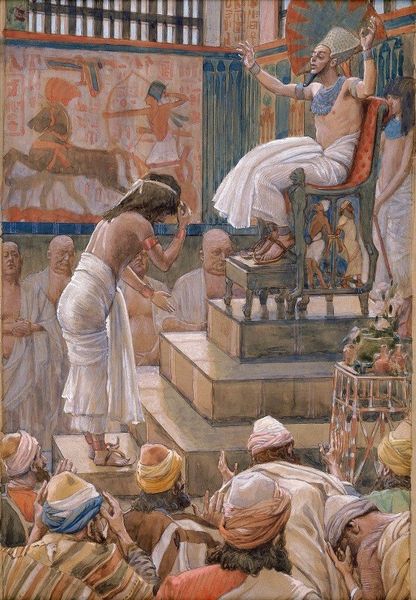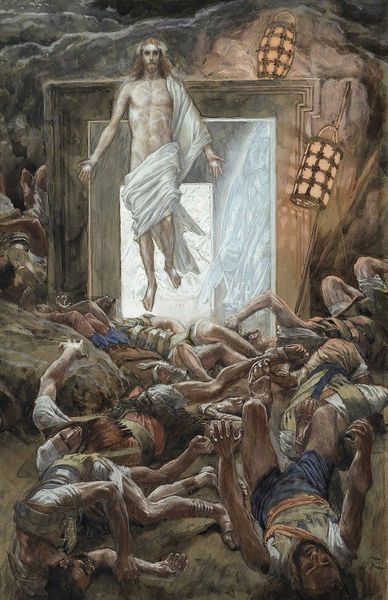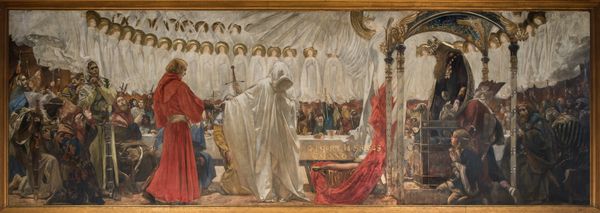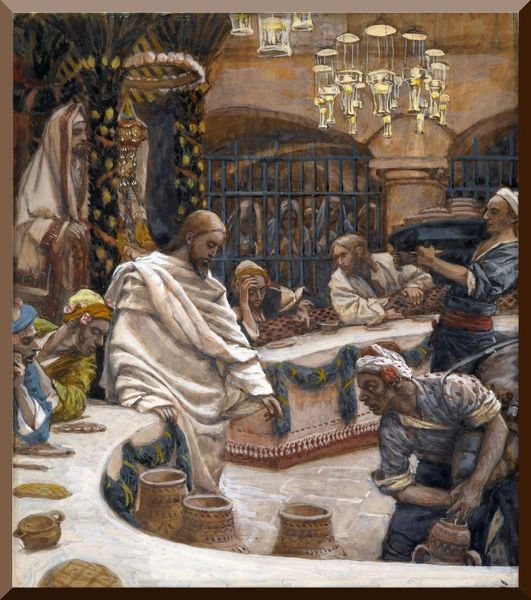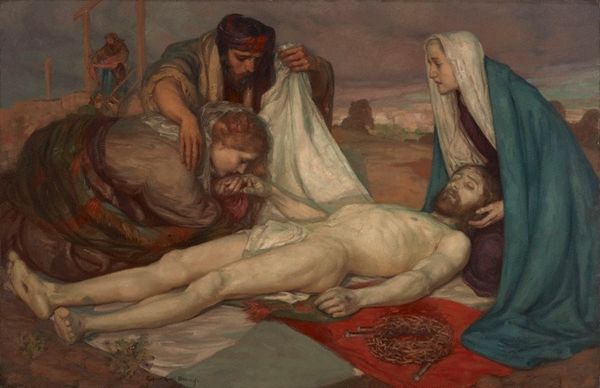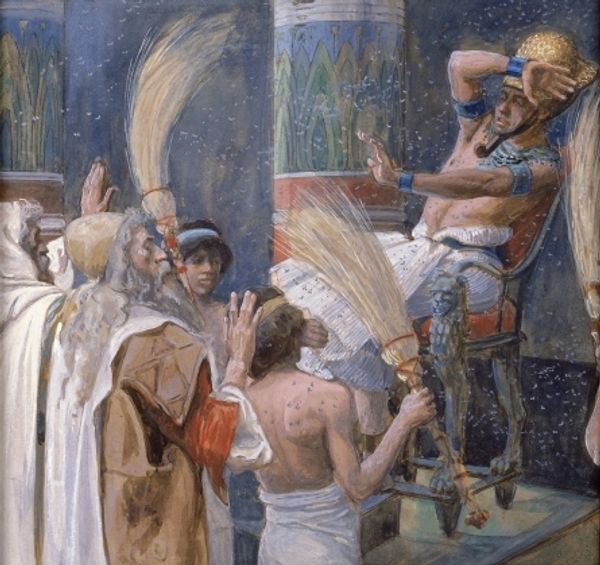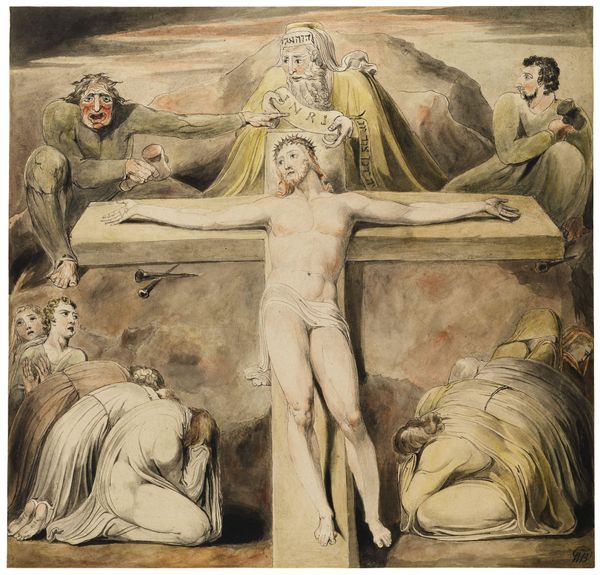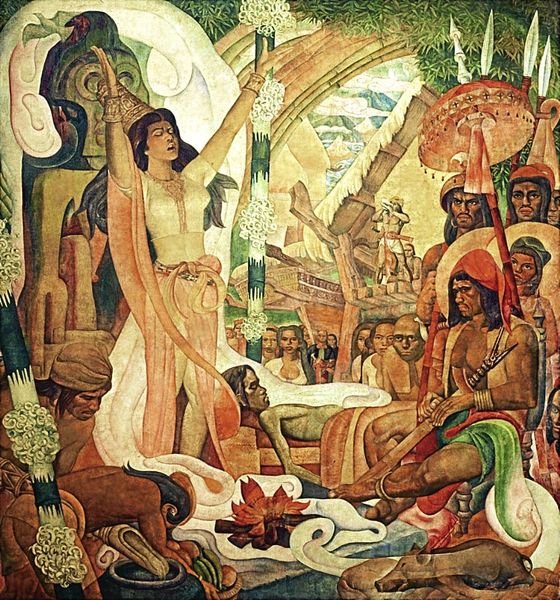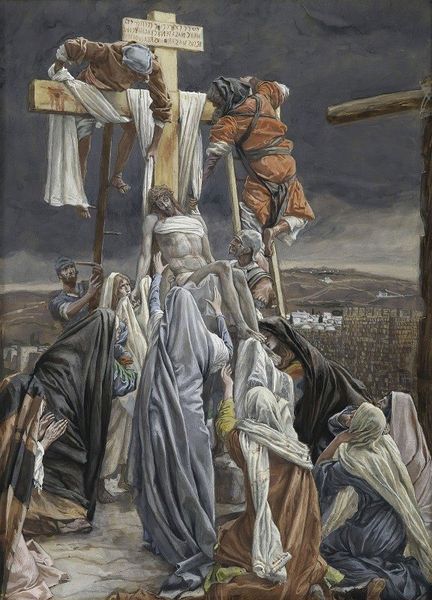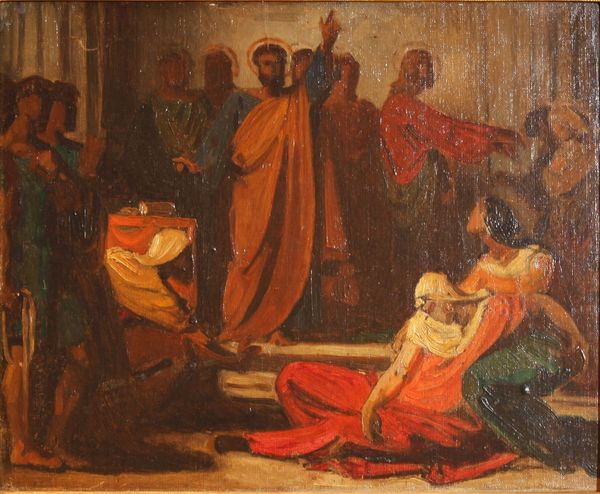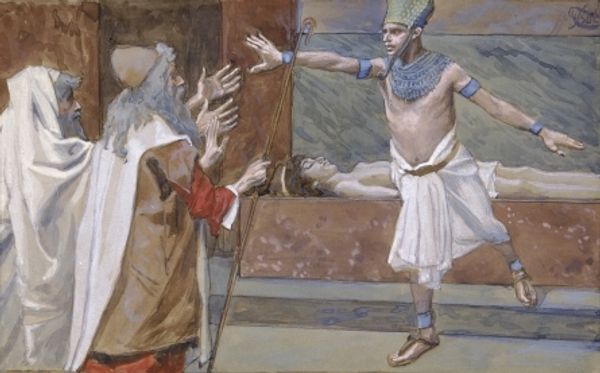
painting, watercolor
#
narrative-art
#
painting
#
oil painting
#
watercolor
#
watercolour illustration
#
genre-painting
#
history-painting
#
academic-art
#
watercolor
Copyright: Public domain
Curator: Here we have James Tissot’s "Joseph Makes Himself Known to His Brethren," created circa 1902. It’s an exquisite watercolor that exemplifies narrative painting. Editor: It's visually arresting! The stark white and blues give it such a solemn tone, almost ghostly, even though there’s a full-blown dramatic scene playing out. Curator: Indeed. The work, primarily executed in watercolor and touches of gouache, depicts a powerful scene of recognition and reconciliation. We witness Joseph revealing his identity to his brothers in Egypt. Note how Tissot has created an incredibly controlled depiction of intense emotion here, typical of Academic Art. Editor: Look at how the men at Joseph's feet, are almost uniform in dress, yet are expressing vulnerability, practically bowing down! It feels ripe with considerations of power, colonialism, even…who has agency. Were the original audiences meant to sympathize with Joseph's power, or feel unnerved by this display of dominance over those rendered subordinate, culturally othered? Curator: Precisely. The way the artist employs watercolor here contributes to the overall narrative. It's thinly applied to portray skin tones, especially the detail in the rendering of architectural elements, which points to careful labor within his artistic practice. Editor: Right, and beyond mere depictions, how the materials are actually imbricated within broader social structures; what does that medium inherently represent, considering what went into obtaining those resources at that historical moment? Curator: The figures themselves invite reflection; each face is delicately rendered and captures diverse responses: surprise, remorse, humility. I do wonder about the role of narrative art such as this and how audiences relate with themes of faith and redemption, both in Tissot's time and now. Editor: Absolutely, let's also consider gender and representation: Joseph's exposed torso, the male gaze Tissot invites in focusing our attention so intimately on that body. And these dynamics ripple outwards when we look at larger systems of art production and the canon, whose narratives often exclude non-male perspectives and stories. Curator: I'm struck how Tissot, although working within traditional watercolor methods, still prompts important inquiries today regarding history, representation, and power through the detailed narrative he presents. Editor: Ultimately this reveals the profound potential in reconsidering such visual historical moments—it's exciting to unlock discourse!
Comments
No comments
Be the first to comment and join the conversation on the ultimate creative platform.
